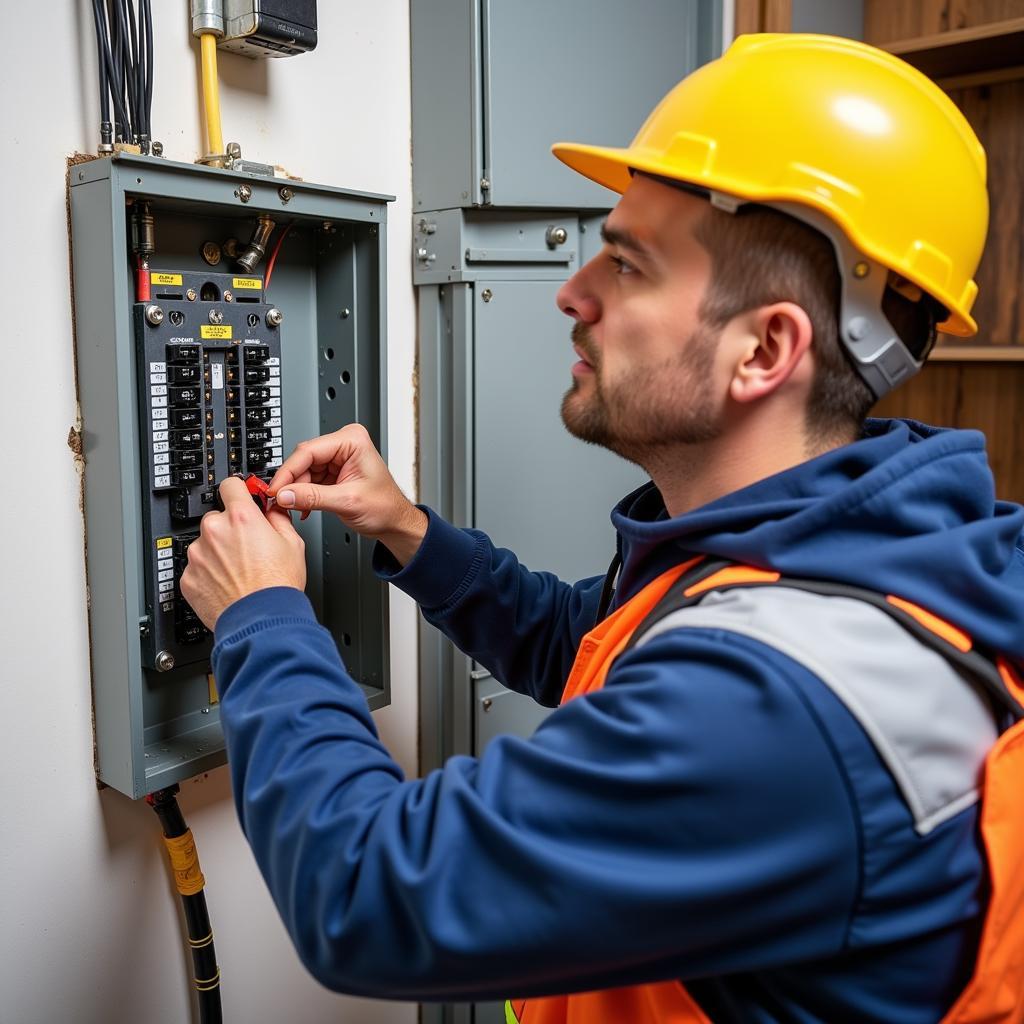How to Check Service Panel to Charge Car
Knowing how to check your service panel to charge your car is crucial for a smooth and safe EV ownership experience. Whether you’re installing a new charger or troubleshooting a charging issue, understanding your electrical panel is essential. This guide will walk you through the process of checking your service panel to ensure it can handle the demands of EV charging.
Understanding Your Electrical Service Panel
Your service panel, also known as a breaker box, is the heart of your home’s electrical system. It distributes electricity throughout your house, protecting circuits from overload. Before you even consider charging an EV, it’s vital to understand what your panel can handle.
Checking Your Panel’s Capacity
The first step is to identify your panel’s amperage. This is usually indicated on the main breaker, often located at the top or bottom of the panel. Common residential panel amperages are 100A, 150A, and 200A. EV chargers require dedicated circuits, typically ranging from 30A to 50A. If your panel is already heavily loaded, adding an EV charger could overload it.
Identifying Available Breaker Spaces
Next, check for available breaker spaces. A dedicated circuit for your EV charger will require a double-pole breaker, which takes up two slots. If your panel is full, you may need a service upgrade to accommodate the additional load.
 Checking the amperage rating and available breaker spaces in the electrical panel
Checking the amperage rating and available breaker spaces in the electrical panel
Determining the Right Charger for Your Panel
Once you understand your panel’s capacity, you can choose the right EV charger. A Level 2 charger is the most common choice for home charging, providing faster charging speeds than a Level 1 charger. However, different Level 2 chargers have varying amperage requirements. Selecting a charger that matches your panel’s available capacity is crucial.
Matching Charger Amperage to Panel Capacity
A 40A charger is a good option for many homes, but if your panel is near capacity, a 30A charger might be a better choice. Consulting with a qualified electrician is highly recommended to determine the best option for your specific situation. They can assess your panel, calculate the load, and advise on the appropriate charger amperage.
Considering Future Electrical Needs
When planning your EV charging setup, think about future electrical needs. Are you planning on adding more appliances or expanding your home? These factors can impact your panel’s capacity and influence the charger you choose.
 Choosing the right EV charger amperage based on available capacity of the electrical panel.
Choosing the right EV charger amperage based on available capacity of the electrical panel.
Working with a Qualified Electrician
While understanding your service panel is helpful, working with a qualified electrician is essential for safe and compliant EV charger installation. They can perform a thorough assessment, ensure proper wiring, and install the necessary safety features.
Ensuring Safety and Code Compliance
An electrician will ensure your installation meets all local electrical codes and safety standards. This is critical not only for the proper functioning of your charger but also for the safety of your home and family. Never attempt to install an EV charger yourself unless you have the necessary qualifications and experience.
“Hiring a qualified electrician is not an expense, it’s an investment in safety and peace of mind,” says Robert Hernandez, a licensed electrician with over 20 years of experience. He adds, “Improper EV charger installation can lead to serious hazards, including fire and electrocution.”
 A qualified electrician installing an EV charger and ensuring safety and code compliance.
A qualified electrician installing an EV charger and ensuring safety and code compliance.
Conclusion
Checking your service panel to charge your car is a crucial step in EV ownership. By understanding your panel’s capacity, choosing the right charger, and working with a qualified electrician, you can ensure safe and efficient charging for years to come. Remember, proper planning and professional installation are key to a positive EV charging experience.
FAQ
- What is the typical cost of upgrading a service panel? The cost varies depending on your location and the scope of the upgrade, but it can range from $1,000 to $3,000.
- Can I charge my EV with a regular outlet? Yes, but it will be very slow. Level 1 charging uses a standard 120V outlet and can take several days to fully charge an EV.
- How long does it take to install an EV charger? Professional installation typically takes a few hours.
- What is a double-pole breaker? A double-pole breaker is used for 240V circuits, like those required for EV chargers. It occupies two slots in the breaker panel.
- Do I need a permit to install an EV charger? In most areas, yes, a permit is required for EV charger installation.
- What are the signs of an overloaded electrical panel? Signs include flickering lights, frequently tripped breakers, and burning smells.
- How often should I have my electrical panel inspected? It’s recommended to have your panel inspected by a qualified electrician every few years.
Have other questions? Check out our other articles on EV charging and car maintenance.
Need assistance? Contact us via WhatsApp: +1(641)206-8880, Email: [email protected] or visit us at 456 Oak Avenue, Miami, FL 33101, USA. Our customer service team is available 24/7.

